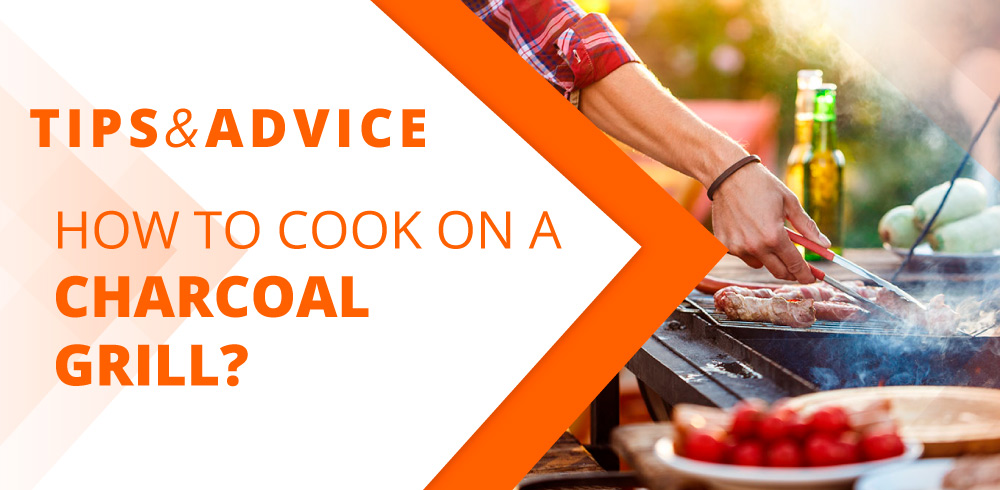
What’s the difference between a charcoal grill and a gas grill?
The first place to begin when thinking about cooking with charcoal is considering how much different it is as a fuel than gas. Charcoal/wood is the O.G. (original grill) fuel type but over the years gas has surpassed charcoal in worldwide popularity—especially in America where two out of three people own a gas grill (according to the Hearth, Patio, & BBQ Association).
This doesn’t mean that gas grills are superior. Both gas and charcoal grills have their pros and cons: gas grills typically offer convenience - they get hot quickly without having to mess with starting a fire, whereas charcoal grills offer distinct & deep flavors gas cannot create. It’s estimated about 1 in 5 Americans own both a charcoal and gas grill, so many folks seem to value having both options when it comes to grilling. Either way, let’s look at why, as a fuel, charcoal is so much different than gas.
Radiant heat is the original infrared
Very popular nowadays are gas “infrared” grills - like TEC’s - where the fuel supply is still propane or natural gas, but they’re designed with ceramic or steel systems to create heat in the infrared light spectrum. Commonly, a gas infrared burner is a flat ceramic plate with holes or gas ports in it so the gas can burn through while the ceramic element gets hot. The ceramic element can “radiate” heat in the infrared light spectrum that creates a consistently high temperature that burning gas alone cannot (this is convection).
Charcoal burns at roughly 2,000 degrees F while propane mixed with oxygen can burn around 5,000 degrees. So why does it feel like most gas grills don’t get very hot and/or have hot & cold spots? Efficiency. The efficiency in which charcoal burns in the infrared light spectrum can transfer its energy to our food so much more efficiently than propane can through convection of the air. This is why charcoal grills often feel so much hotter than gas grills and why it’s easy to “dry out” a chicken breast or a steak on a gas grill at high heat while you can burn it to a crisp on high heat over a charcoal grill. Knowing about this efficiency and how to harness it is the first step in becoming a charcoal grill master.
Direct vs. Indirect
After heat efficiency, the style or manner of cooking in which one cooks on a charcoal grill must be considered and just as important - what is cooking matters, too. Consider the difference in preparing a rack of ribs vs. a ribeye steak. Those two cuts of meat are not at all close to being equal, so how one should prepare them won’t be equal either. This is where different cooking methods come into play.
Direct Heat
This is the style of grilling most people are familiar with when it comes to backyard barbecue - hot dogs, hamburgers, steaks, chops, and chicken - all grilled over a direct open fire. It’s simple: steady charcoal (or gas) fire directly underneath the food to produce a consistent high heat that creates complex grilled flavors we all know and love.
This method is well suited for the foods I call “simple” cuts - again, the steaks of the world, chicken breast, asparagus - all items that are well designed for a quick stint on the grill. Using this method we’re after two things: a high heat sear while reaching the desired doneness. Charcoal is a wonderful fuel to achieve these goals: a consistent charcoal fire is perfect to accommodate grilling these types of food.
Indirect Heat
This type of heat is where charcoal really begins to outshine gas. While it is absolutely possible to employ indirect cooking on a gas grill, charcoal is very well suited for this type of cooking. Just as the name sounds, it’s the opposite of direct heat: light a charcoal fire on one section of the grill and place the food on another section - i.e., not directly over the charcoal fire, but away from it. Then, using a cover or the lid of the grill, the charcoal fire heats more like an oven where the high heat simply wafts over to the indirect space.
Indirect heat / indirect grilling is well suited for the “tough” cuts - items that need time to break down tougher muscle fibers found in things like shoulders, ribs, and the like. This is how professional pit-style BBQ masters produce the world’s best brisket, pulled pork, ribs, and all of the wonderfully tender BBQ favorites.
Style of grill
Finally, as we consider energy transfer and direct vs. indirect heat, it’s important to consider the style or design of the charcoal grill and how one can control those first two tenets. Let’s explore the most common examples of charcoal grills:
Kettle Charcoal Grills
Most backyard BBQs are of a “kettle” style - that’s probably the first thing anyone thinks of when it comes to a charcoal grill. These models are affordable, consistent, and capable of producing high-quality BBQ. These units are extremely well suited for direct heat grilling steaks, burgers, chops & more. When it comes to indirect heat, it’s totally capable, however, it’s not what it’s necessarily designed for so it will lack compared with designs below.
“Modern” Charcoal Grills
Designed to emulate the look, shape, and design of traditional gas grills, these charcoal grills are rectangular and meant to provide a wide landscape to grill on. Performance-wise, these models function similarly to kettle-style grills in that they’re well suited for direct heat grilling and absolutely can accommodate indirect grilling but it’s still not as strong as the style below. In addition, some of the modern features include an adjustable height on grill grates or the charcoal tray, warming racks, and some may even have gas burners to ignite the charcoal.
Offset Smokers
When talking about slow-smoked BBQ, an offset smoker is the desired appliance. These come in all shapes, sizes, and styles so there’s more than one type of offset smoker - but the basic design is present in most offset smokers: the charcoal is housed in one area and the food is cooked away from the fire, usually offset, to slowly heat and smoke it. The design here allows for such a gentle cooking method, the results are the most tender & delicious BBQ one can have.
Final Tips:
We’ve considered how charcoal grills are fundamentally different from gas grills by their heat transfer, available cooking methods, and finally how the style & design impact performance. So, as you decide what to cook on your charcoal grill, consider what you are grilling. Does the meal you’re prepping require the high direct heat over a charcoal fire, or do you want a low, slow smoke with indirect heat? Considering these factors can be key to becoming the best barbecue-tionist in the neighborhood and having everyone flock to your backyard on grill night.
